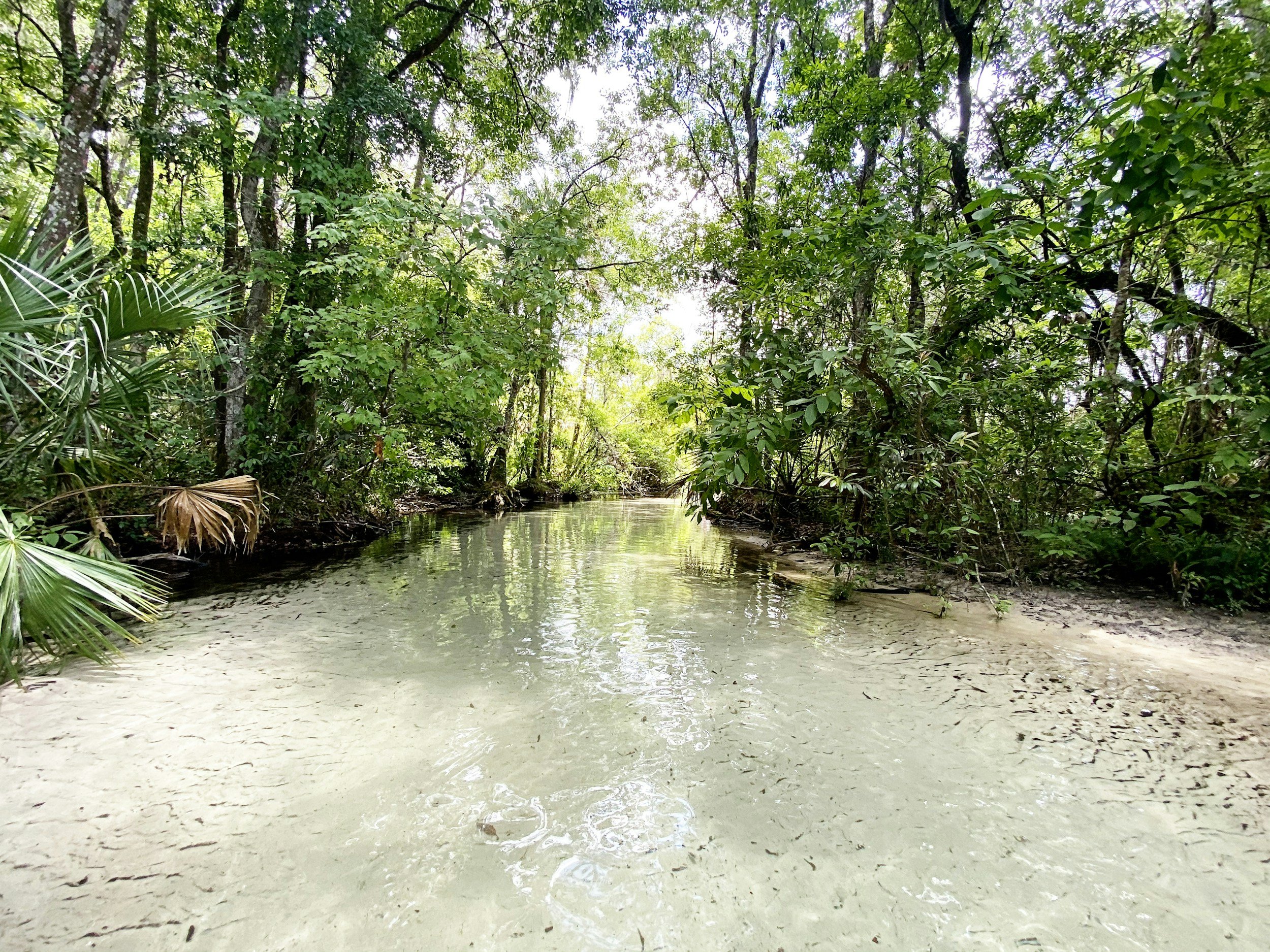
Springs
Florida Springs: Status, Conservation and Future Outlook
Florida's springs are among the most iconic and ecologically valuable natural features in the state. Among more than 1,000 springs, Florida supports the largest concentration of freshwater springs on the globe. These springs are fed by the Floridan Aquifer, one of the most productive aquifers in the world, and they discharge crystal-clear, nutrient-rich water that supports diverse ecosystems and serves as a vital water source for human communities. Despite their ecological and cultural significance, Florida's springs face mounting threats including pollution, groundwater overuse, and habitat degradation.
Status of Florida Springs
Florida springs range in size and flow from first-magnitude springs that discharge more than 100 cubic feet of water per second to small springs that feed local streams and rivers. Some of the more well-known springs include Silver Springs, Wakulla Springs, Ichetucknee Springs, and Blue Spring, which combined draw millions of visitors each year for recreation such as swimming, kayaking, diving, and viewing wildlife.
These springs form critical habitats for aquatic species such as fish, turtles, manatees, and invertebrates. Many are linked to spring runs, rivers, and estuaries, making it a complex network of connected ecosystems. Florida's springs have also been an essential ingredient for the health of the state's economy through revenue-generating ecotourism and outdoor recreation.
However, in the last few decades, Florida's springs have become increasingly degraded due to human activities. Growing nitrate pollution from fertilizers, septic tanks, and urban runoff causes algae blooms that diminish water quality and alter ecosystems. Groundwater overpumping for agriculture, development, and public water supply has also lowered the flow rates in many springs, diminishing their life-supporting capacity.
Ecological and Economic Importance
Florida springs play an essential part in the state's environment and economy:
1. Freshwater Supply: The springs are, in essence, a direct discharge of the Floridan Aquifer to supply fresh drinking water to millions of its citizens.
2. Biodiversity Hotspots: Springs serve as habitats that harbor plant and animal species, comprising unique aquatic vegetation, freshwater fish, and endangered species like the West Indian manatee.
3. Economic Value: Springs attract several tourists for recreational activities such as swimming, tubing, snorkeling, and cave diving. In this way, they raise millions of dollars every year towards Florida's economy.
4. Cultural and Historical Significance: Springs are the places of deep cultural origins among Native Americans, early settlers, and modern communities as well. They have vital scientific research and educational relevance too.
Conservation Efforts
Recognizing the importance of Florida's springs, state agencies, conservation groups, and communities are working to protect and restore these fragile ecosystems:
1. Springs Protection Programs: The Florida Springs Initiative, launched in 2001, provides funding for monitoring, research, and restoration projects. The Outstanding Florida Springs designation offers added protections for 30 major springs and their watersheds.
2. Water Quality Improvement: Best management practices in agriculture, upgrading wastewater treatment facilities, and upgrading septic systems to central sewer systems are some of the ways being sought to reduce nitrogen pollution.
3. Groundwater Conservation: Managing water withdrawals through regulations and encouraging water conservation practices help maintain spring flow and aquifer levels.
4. Habitat Restoration: Programs focus on removing invasive plants, restoring native vegetation, and improving spring-run habitats to support wildlife.
5. Public Awareness and Education: Nonprofits like Save Our Springs Alliance and state parks engage the public through education campaigns, fostering support for springs protection and sustainable practices.
Threats to Florida Springs
Florida’s springs face a combination of natural and human-made threats:
1. Nutrient Pollution: Agricultural fertilizers, wastewater runoff, and septic systems introduce excess nitrates into the groundwater, fueling harmful algal blooms that degrade spring ecosystems.
2. Groundwater Overuse: Increased demand for groundwater due to urbanization, agriculture, and population growth lowers aquifer levels, reducing spring flow.
3. Habitat Degradation: Development, dredging, and recreational overuse disrupt spring habitats and harm aquatic life.
4. Climate Change: Rising temperatures, droughts, and changing precipitation patterns affect aquifer recharge rates and water availability.
5. Invasive Species: Non-native plants and animals compete with native species, altering spring ecosystems and water quality.
Future Outlook
The future of Florida's springs hinges on a balance of water use, improvement in water quality, and restoration of natural ecosystems. Strengthened regulations on nutrient pollution, groundwater withdrawals, and land development are necessary to safeguard spring health. Programs that promote sustainable agricultural practices, advanced wastewater treatment, and water conservation will be particularly crucial in reducing human impact.
Equally important to the future of Florida's springs is the expansion of public awareness and community involvement. Citizens can do their part by limiting fertilizer use, conserving water, and supporting policies protecting natural resources. Ecotourism and recreation, if adequately managed, can provide financing and incentives for conservation while still allowing people to enjoy the beauty of Florida's springs.
Conclusion
Florida's springs are irreplaceable ecological, cultural, and economic resources that are increasingly threatened by human activity and environmental change. Although conservation efforts are paying off, the protection of these fragile ecosystems will require sustained commitment by policy makers, scientists, and the public. By improving water quality, conserving groundwater, and restoring habitats, Florida can ensure that its springs continue to flow, sustain wildlife, and provide clean water and recreation opportunities for future generations.

